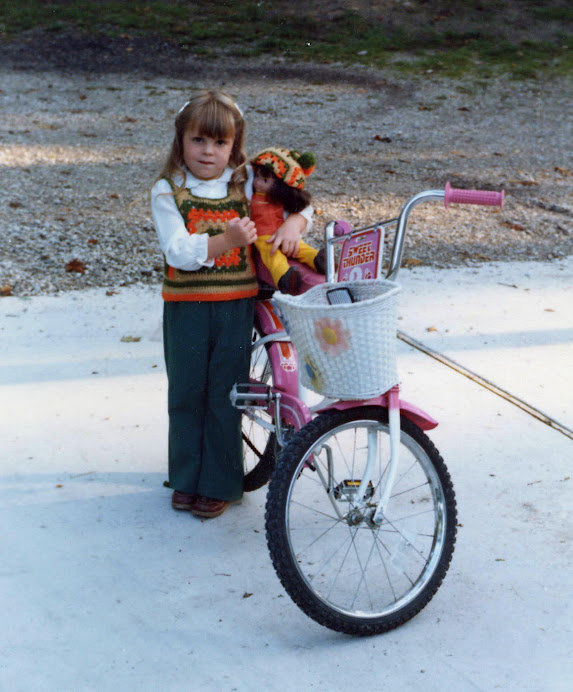I'm sharing all my findings so others can use them when the time comes and so I can remember for future references. I have way better things to do than keep a private journal and a blog. So here is what I learned yesterday when I forgot my socks: it was actually a good thing and for the first time in a long time I didn't get cramps in my toes or arch or any numbness in my foot. Yee Haw. Also, running after swimming is really nice because the pool helps get a little of the pudge out of your feet. That pudge/swelling can make your feet really stiff and it translates to an even more awkward stride.The feet can ache like they have the flu.
Last night I came across this article. Yeah I know, I should go to bed and stop reading about running and go running earlier but it would have helped me to know some these things earlier, so I share. The part that says the relative comfort of a run may be dictated by the relative position of the baby is very, very helpful. My baby is rather mobile and not locked into one position yet so I think I have experienced all of these positions so it was nice to understand what causes what.
Ok so it's circa 1997 but I enjoyed so I share. I highlighted and enlarged the important parts. Nerd. O
Dynamic Duo - Running in Pregnancy
by Elaine Cooper
First published in Australian Runner and Athlete magazine - March/April 1997
So you're halfway and still running through your pregnancy. Well done! If you're a serious runner you may be feeling daunted and doubtful you will survive the process. Perhaps its those psychological 'molehills' that are becoming more mountainous?
While some may enjoy the attention, for most it takes courage and a healthy dose of confidence to run around your neighbourhood with a burgeoning belly. Sometimes a rhino's exterior is called for to help you cope with the barrage of comments, stares and outright disapproval. Prepare handy comments for a quick counter attack. Other tactics are to run with friends or to get up a little earlier to avoid an audience. Wearing baggier clothes is useful but you reach a stage where you can't find a circus tent big enough to hide 'the bulge'.
As the weight factor increases, you may find your musculoskeletal system starts to creak and groan. A common complaint is sharp knife-like stitches in the sides of the lower abdomen. They are often worse in the beginning of a run and may be sufficiently intense to stop you running. Try stretching away from the pain and walking until the stitch eases. Crouching down may also help. The pain has been attributed to the internal uterine ligaments adjusting to the load of the growing uterus and baby. The low back muscles may also be implicated. In this case mobilisation and massage often provide exquisite relief.
Changes in your running style will become evident, especially after you lose sight of your toes. Knee lift and stride length will suffer. Forefoot strikers usually end up 'flat-footers' under the influence of an increasing load. If you're also a bike rider use this alternate form of exercise to help preserve the strength of hip and leg muscles. If the quadriceps muscles decline in strength this may aggravate knee problems in some runners. Weight training may also be a used to maintain the strength and endurance of these muscles. Try to avoid the 'peanut posture', resisting the urge to let the pelvis tip forward and the stomach sag. Abdominal strength should be a priority before and after pregnancy. In the later months some runners use a light weight maternity girdle to provide additional support especially for the low back.
The hormone oestrogen will soften ligaments throughout the body, increasing joint laxity and this can be a potential problem for runners. Weight-bearing areas prone to stretch and inflammation in later pregnancy are the -iliac joints and the symphysis pubis. Take pity on your feet, choosing heavier training shoes to provide more cushioning. Shock absorbing insoles are also useful. You may also require additional support for your breasts. This can be an exciting discovery for flat-chested runners - but be warned, it doesn't last. After breast-feeding you often find you're left with bigger craters than before. Having a larger bust may strain the muscles between your shoulder blades. Exercising these muscles daily with a rowing machine or as shown in figure 1 may provide some relief.
The position of the baby may dictate the relative comfort of a run. When the baby lies across your pelvis (transverse) your 'load' can feel huge as if it is spilling from the pelvis. The internal side-ways swing of the baby may reduce your style to an awkward, waddling gait. A baby lying in breech may leave you gasping for air as !the head projects up into the diaphragm and practically out your throat. The head-down position is probably the most comfortable although you may find one leg aches or becomes numb if there is pressure on pelvic nerves or arteries. If the baby's head has engaged you may receive shooting nerve pains that feel like electric shocks and the bladder can receive a battering. Sometimes pelvic floor muscles become fatigued during a run leaving you with an aching, throbbing pain in this region. Lie down to take the strain from the area.
As the euphoria of trimester two merges into the fatigued-state of the last trimester you may find running increasingly difficult. Try adjusting the duration and intensity of your runs or choose another exercise if you feel too slow and cumbersome. As 'the day' approaches, aches and pains may become more noticeable and Braxton-Hicks contractions can increase in frequency and strength. Tell someone where you'll be running and for how long. Don't venture too far away.
Many studies have been done on the type of labour experienced by physically trained women. Unfortunately the first stage of labour seems unaffected by physical fitness. However the second and third stages (pushing the baby and placenta out) may be shortened and facilitated by fitness, possibly due to the stronger abdominal and pelvic musculature and endurance capacity of athletes. There also seems to be evidence to support quicker recovery of athletes post-natally.
Assuming you're safely through the ordeal of labour and you and your partner are the proud parents of a potential Olympian... congratulations! You're now ready to leap from the bed and commence your path back to full fitness. Right? Unfortunately your lucky if you can make it to the shower on foot. What happened to that fitness you fought so long and hard for over the past nine months? Exhaustion, weakness, discomfort and depression are common feelings in the first week, which isn't surprising. Blood loss, hormonal fluctuations, emotional upheavals, episiotomies, lacerations, sleep loss, breast engorgement...you name it. They can make you feel like you're in the grip of a bad flu. Return to physical activity is dependent on factors such as your recovery from labour/Caesarean section, fatigue, stress, availability of help, complications, your baby and motivation.
The following table gives you an approximate idea of how long it takes for your physiology to revert back to the non-pregnant state:
- Cardiovascular system - 2 weeks.
- Abdominal tone - 6 weeks.
- Joints & ligaments -12 weeks plus.
- Lochia (bleeding) - 3 weeks.
- Urinary tract - 8 weeks.
- Episiotomy - 2 weeks.
Good luck!


















1 comment:
I wish I had known all this back in the day when Tim (1978) and Seth (1983) were born.
Post a Comment